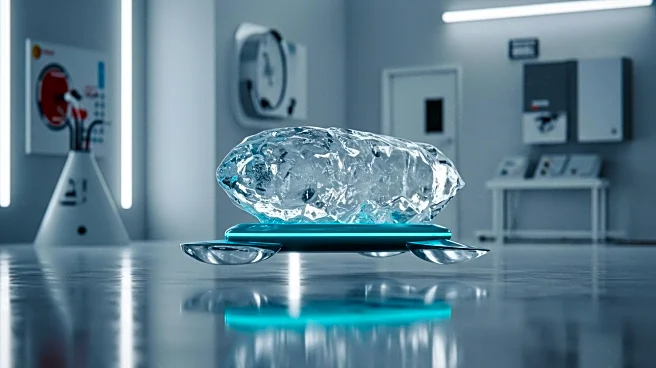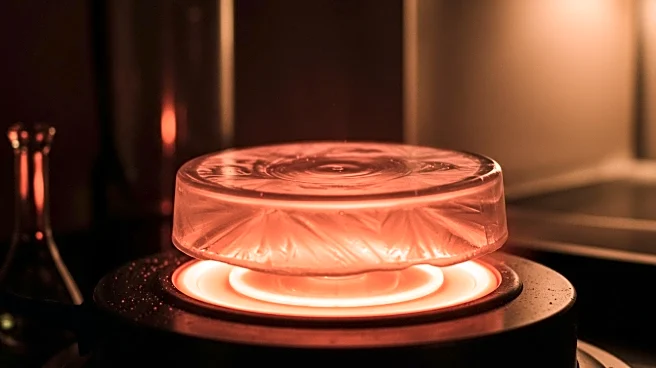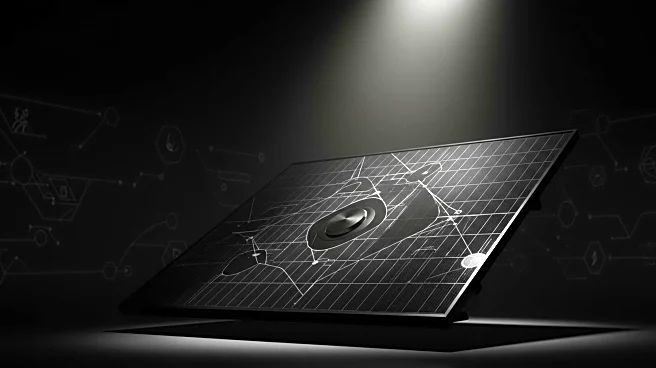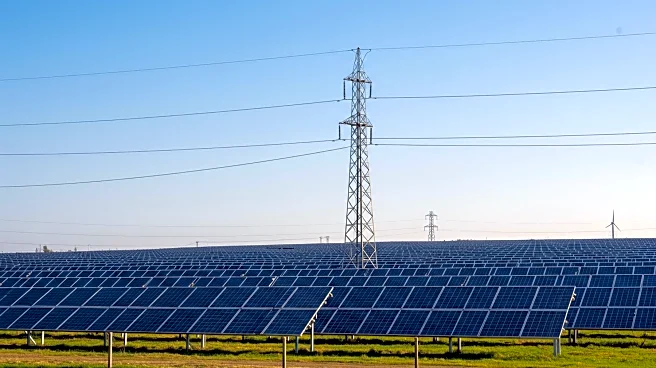What's Happening?
Scientists at Virginia Tech have engineered a method to make ice move autonomously on a specially designed metal surface. This innovation involves creating flat metal plates with V-shaped grooves in a herringbone pattern, which guide the melting ice disks forward without external force. Inspired by the natural phenomenon of 'sailing stones' in Desert Valley, the researchers aim to utilize this self-propelled ice for rapid defrosting and energy harvesting. The study, published in ACS Applied Materials & Interfaces, demonstrates the potential for passive ice removal and microtransport systems, which could lead to advancements in anti-icing technologies and self-cleaning surfaces.
Why It's Important?
The development of self-propelled ice has significant implications for green energy and environmental sustainability. By harnessing the controlled melting and movement of ice, this technology could lead to innovative energy harvesting methods, potentially reducing reliance on traditional power sources. The ability to generate power from rotating ice disks equipped with magnets or turbines presents a novel approach to renewable energy. Additionally, applications in anti-icing systems and self-cleaning surfaces could improve efficiency and reduce maintenance costs in various industries, including transportation and infrastructure.
What's Next?
Further research is needed to explore the full potential of self-propelled ice in practical applications. Scientists are considering the design of metal plates that could continuously rotate ice disks for energy generation. This could involve integrating magnets or turbines to convert the mechanical motion into electrical power. The team at Virginia Tech plans to investigate additional uses for this technology, potentially expanding its application in microfluidic transport systems and other fields. Collaboration with industry partners may accelerate the development and commercialization of these innovations.
Beyond the Headlines
The ethical and environmental implications of self-propelled ice technology are noteworthy. As industries seek sustainable solutions, this innovation could contribute to reducing carbon footprints and promoting eco-friendly practices. The concept of passive energy generation aligns with global efforts to combat climate change and transition to renewable energy sources. Moreover, the technology's potential to enhance anti-icing systems could improve safety and efficiency in transportation, particularly in regions prone to severe weather conditions.













